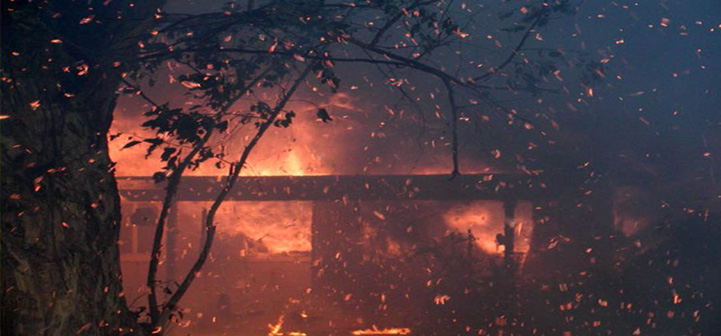Article Written by:
Yvonne Barkley, University of Idaho Extension, Moscow, ID
Predicting the mortality of conifers after a wildfire is important for post-fire planning and management. Fire resistance varies greatly with plant species and factors such as age. In general, young, fast-growing trees on good sites will be better able to withstand damage from fire than over-mature, slow-growing trees on poor sites.
Additional general statements that hold true across species are:
- as the percent of crown scorch increases, mortality increases.
- as the thickness of the bark decreases, mortality increases.
- as the size of the trunk increases, mortality decreases.
Predicting Mortality
Gathering information on mortality and assessing the percent of live trees that will die from secondary effects such as bark beetle invasion, fungal infections, and/or a decline in wood quality is important for planning post-fire management activities. There are so many variables involved in assessing post-fire tree mortality that it is impossible to apply a formula or standard set of characteristics, making this process more of an art than a science. You will get the most accurate results by using a combination of methods.
Method Used to Assess Cambium Condition
- Remove a small section (about one-inch square) of bark down to the sapwood near the base of the tree (see graphic). Check at four sites around the circumference of the trunk. This will allow you to determine the amount of live cambium.
- Check the condition of the inner bark at or below the duff layer using the same method as above.
- For most species of conifers, if 2-4 sites are brown and dry the tree should be considered dead or at risk of dying.
Method Used to Predict Mortality by Percent Crown Scorch Volume
- Determine the species of the tree.
- Measure diameter of tree at breast height (dbh).
- Look for brown, dried, or burned foliage and estimate the amount of foliage scorched. Be sure to look at all sides of the crown.
- For most conifer species, anything with over 50-60% crown-scorch should be considered dead or at risk of dying.
Tables for estimating the probability of fire-induced mortality for specific tree species can be found in the linked articles listed below.
Predicting Mortality in Ponderosa Pine (Pinus ponderosa) After a Wildfire.
Predicting Mortality in Western Larch (Larix occidentalis) After a Wildfire.
Predicting Mortality in Douglas-fir (Pseudotsuga menziesii) After a Wildfire.
Predicting Mortality in Grand Fir (Abies grandis) After a Wildfire.
Predicting Mortality in Lodgepole Pine (Pinus contorta) After a Wildfire.
Predicting Mortality in Engelmann Spruce (Picea engelmannii) After a Wildfire.
Predicting Mortality in Subalpine Fir (Abies lasiocarpa) After a Wildfire.
Predicting Mortality in Western White Pine (Pinus monticola) After a Wildfire.<br Predicting Mortality in Western Redcedar (Thuja plicata) After a Wildfire.
Predicting Mortality in Western Hemlock (Tsuga heterophylla) After a Wildfire.
Predicting Mortality in Quaking Aspen (Populus tremuloides) After a Wildfire.
For more in-depth information go to After the Burn: Assessing and Managing Your Forestland After a Wildfire. University of Idaho Extension, SB 78, Idaho Forest, Wildlife and Range Experiment Station, Moscow, ID.


